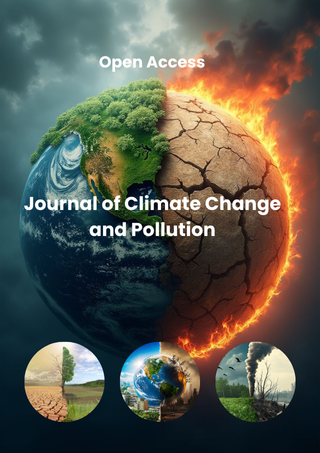ABSTRACT
Climate change and pollution have emerged as two of the most pressing environmental crises of the 21st century. Their interconnected nature has led to a vicious cycle where pollution accelerates climate change, and climate change in turn worsens pollution levels. This paper explores the causes, impacts, and mitigation strategies of this dual threat, highlighting the urgent need for global cooperation and sustainable solutions.
Keywords: Climate change; Air pollution; Greenhouse gases; Global warming; Sustainability; Environment
INTRODUCTION
The world today faces an unprecedented environmental emergency characterized by rapidly rising global temperatures and deteriorating air quality. While climate change and pollution are often discussed as separate issues, they are inextricably linked. Pollution, in the form of greenhouse gas emissions and particulate matter, acts as a major driver of climate change. Meanwhile, the changing climate intensifies pollution through increased wildfires, heatwaves, and altered weather patterns. This symbiotic relationship has led to what scientists now call a “climate-pollution nexus.” Understanding this connection is vital for designing effective policies and mitigation strategies.
DESCRIPTION
The Link Between Pollution and Climate Change
Pollution, particularly the emission of greenhouse gases such as carbon dioxide (CO₂), methane (CH₄), and nitrous oxide (N₂O), plays a significant role in global warming. These gases trap heat in the atmosphere, leading to a rise in global temperatures. Air pollutants like black carbon and tropospheric ozone further exacerbate warming while posing severe health risks to humans. Conversely, climate change alters atmospheric dynamics in ways that can worsen pollution. For example, higher temperatures enhance the formation of ground-level ozone, a harmful air pollutant. Similarly, prolonged droughts and wildfires—driven by climate change—release massive amounts of smoke and particulate matter into the air, degrading air quality even in distant regions.
Impacts on Health and the Environment
The twin crisis of climate change and pollution has far-reaching consequences. According to the World Health Organization (WHO), air pollution is responsible for around 7 million premature deaths annually. Exposure to polluted air contributes to respiratory diseases, heart conditions, and even neurological disorders. At the same time, climate change threatens food security, water resources, and biodiversity, amplifying existing social and economic inequalities. Ecosystems are also under immense stress. Acid rain, a byproduct of industrial pollution, damages forests and aquatic systems. Ocean acidification, driven by CO₂ absorption, endangers marine life and coral reefs. Moreover, extreme weather events such as floods, hurricanes, and heatwaves linked to global warming destroy habitats and displace millions of people globally.
Mitigation and Policy Measures
Addressing this dual crisis requires a combination of technological innovation, policy reform, and individual action. Transitioning to renewable energy sources such as solar, wind, and hydroelectric power can significantly reduce both greenhouse gas emissions and air pollutants. Governments must implement stricter emission standards for industries and vehicles, promote energy efficiency, and invest in sustainable infrastructure. At an international level, agreements like the Paris Climate Accord aim to limit global temperature rise while encouraging countries to adopt cleaner technologies. Urban planning should focus on green spaces, improved public transportation, and waste management to reduce local pollution. Finally, public awareness campaigns play a crucial role in encouraging responsible consumption and lifestyle choices.
CONCLUSION
The battle against climate change and pollution is not one that can be fought in isolation. These intertwined issues demand a unified approach that integrates scientific research, global collaboration, and strong political will. By recognizing the shared roots of both crises unsustainable industrialization and consumption patterns humanity can chart a path toward a cleaner, safer, and more sustainable future. The skies that choke today with smog and heat can once again become symbols of balance, resilience, and renewal.
CONFLICT OF INTEREST
The author declares no conflict of interest regarding the publication of this article.
ACKNOWLEDGEMENTS
The author expresses gratitude to environmental researchers, activists, and organizations worldwide who continue to raise awareness and push for sustainable climate and pollution solutions.
Indexed In
DOAJ
CrossRef
PubMed
MEDLINE
ResearchBib
OAJI
Sindexs
EBSCO A-Z / Host
OCLC - WorldCat
Journal Flyer


